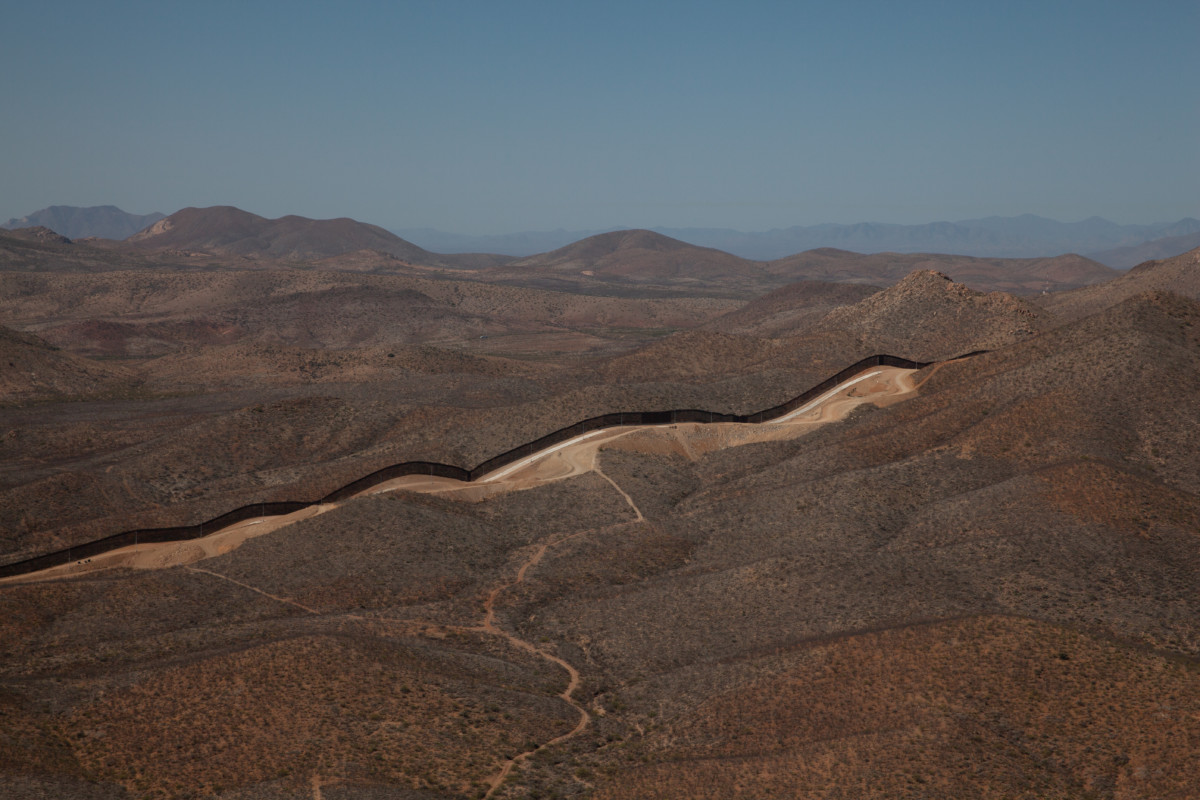One year ago, President Biden paused the border wall.
On January 20, 2021, I remember holding my breath and hoping that when President Biden stepped into office, he’d immediately end the senseless destruction at the border. Which he did, issuing Proclamation 10142 and pausing the wall. Construction crews had seven days to tidy up their work enough to walk away so that the funding sources fueling the wall contracts could be reviewed.
In the following days, we watched as construction seemed to continue at a breakneck pace: roads were still being built and heavy equipment was on the move. But after the requisite week given as a grace period, it fell quiet along the border. And for many of us, all hoping for swift healing of the communities and lands damaged by dynamite and new segments of steel wall, it felt a little too quiet.

Credit: Volunteer LightHawk pilot and photographer Greg Bedinger.
We waited to hear the outcome of the financial review of funds used by the Trump Administration to build the wall — and it finally came. On April 30, 2021, the U.S. Department of Defense announced that all of their funded border barrier projects would be terminated, meaning that wall building in Arizona would no longer be funded.
I will never forget that true moment of celebration, but it’s not entirely over. Even today, other stretches of the border remain at risk; the border projects in California and Texas are backed by congressional funded appropriations that are still in place for border barriers in those states.
[Watch: Border Changes in Southeastern Arizona—A Pilot’s Perspective]
In some respects, the fate of each section of the border in California, Arizona, New Mexico, and Texas has continued on its own trajectory. But on December 20, 2021, the U.S. Department of Homeland Security announced that Customs and Border Protection was authorized to complete “additional projects necessary to address life, safety, environmental, and other remediation requirements in locations previously by the Department of Defense.”
This action enables activity in the 119-mile Tucson sector that stretches from the west side of Cabeza Prieta National Wildlife Refuge eastward to the New Mexican border.
On January 4, 2022, we saw the first details of what is included in the Border Barrier Remediation Plan for Pima, Santa Cruz, and Cochise Counties. The Plan focuses primarily on stabilizing the integrity of what border wall and other infrastructure were previously built. However, there are opportunities to encourage better environmental practices and outcomes when the projects move forward later this year.
U.S. Customs and Border Protection (USCBP) has invited the public to offer comments on the Border Barrier Remediation Plan by February 3. If you need help preparing your comments, we invite you to join us for a workshop on January 28, where we’ll share key environmental messages for you to include in your messaging and coach you through how to share your feedback with USCBP.
Finally, please help support the border research and recovery planning we’re doing. Each donation ensures our ability — and those of our wonderful volunteers — to champion restoration of the border that runs through the heart of our Sky Island region. Make a gift to the Border Research and Recovery Plan today.
